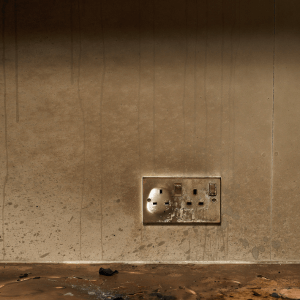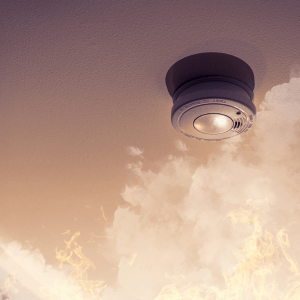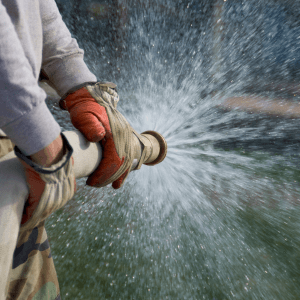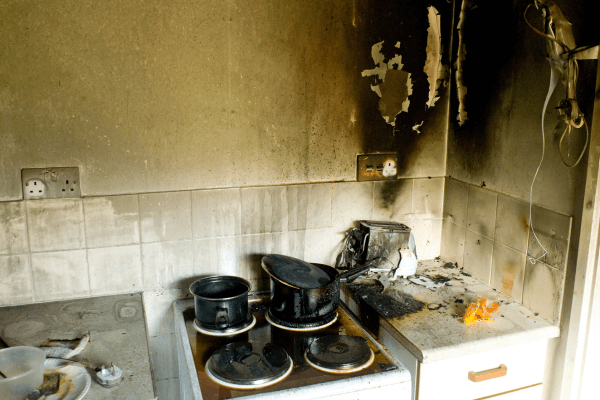You’ve just been through the unimaginable—your home has experienced a fire. You’re relieved that everyone is safe, but now you’re standing amidst the aftermath, wondering what to do next. The damage is overwhelming, and the thought of piecing your life back together feels daunting. But don’t worry; we’re here to help you navigate through this challenging time with confidence and care.
This post is designed to be your go-to guide for assessing fire damage. Whether you’re dealing with minor smoke damage or more severe structural issues, understanding what to look for and why it matters is crucial for restoring your home to its former glory.
For immediate support in the aftermath of a fire:
Red cross- What to do after a fire
FEMA- After the fire
Immediate Safety Concerns
Before diving into the nitty-gritty of fire damage assessment, let’s talk safety. After a fire, your home may pose hidden dangers that aren’t immediately obvious. Here’s what you need to check first:
Structural Integrity
Fire can wreak havoc on a home’s structure, even if it appears relatively intact from the outside. The intense heat can weaken key structural elements, making them unstable and unsafe.
What to Check: As you walk through your home, look for visible signs of heat damage such as sagging floors, warped walls, or cracked ceilings. These are red flags that the fire has compromised your home’s structural integrity.
A compromised structure isn’t just an eyesore—it’s a serious safety risk. Collapsing ceilings or floors can lead to severe injuries. That’s why it’s essential to have a professional assess the damage and determine whether it’s safe to remain in your home.
Electrical Systems

Fires and electrical systems are a dangerous mix. Even if your wiring appears unharmed, the heat from a fire can cause unseen damage that could spark another fire later on.
What to Check: Inspect outlets, wiring, and electrical panels for any signs of damage. Burn marks, melted components, or frayed wires are all indicators that your electrical system may have been compromised.
Damaged electrical systems are a leading cause of post-fire hazards. If you’re not an electrician, it’s best to have a professional inspect your system to ensure it’s safe before turning the power back on.
Gas Lines and Appliances
Gas lines and appliances are another area of concern after a fire. Even a small fire can cause significant damage to gas lines, increasing the risk of leaks or explosions.
What to Check: Carefully inspect gas lines and appliances for any signs of leaks or damage. If you smell gas or notice any damage, it’s crucial to turn off the gas supply immediately and contact a professional.
The risk of explosions or further fires from compromised gas lines is too great to ignore. Ensuring that your gas lines are intact is a vital step in making your home safe again.
Assessing Fire and Heat Damage
Once you’ve addressed immediate safety concerns, it’s time to assess the fire and heat damage. This step will help you understand the full extent of the damage and what it will take to restore your home.
Burn and Heat Damage
Burn and heat damage occur in areas directly exposed to flames or intense heat. This type of damage is often visible, but its full impact may not be immediately apparent.
What to Check: Focus on areas like walls, roofs, and furniture that was directly in the fire’s path. Look for signs of charring, discoloration, or warping.
Burn damage can weaken materials, making them susceptible to collapse or further deterioration. Addressing this damage early on can prevent future structural issues.
Damage to Personal Belongings
Fires don’t just damage your home—they also take a toll on your personal belongings. Heat and flames can destroy or damage electronics, furniture, and other valuables.
What to Check: Assess the condition of your personal items. Electronics may be fried even if they don’t show visible damage, and furniture could be structurally compromised.
Damaged belongings can pose safety risks, especially if they retain heat damage or become unstable. Deciding whether to restore or replace these items is a crucial part of the recovery process.
Assessing Smoke and Soot Damage
Smoke and soot are often the most pervasive—and frustrating—types of fire damage. They can infiltrate every nook and cranny of your home, leaving behind lingering odors and health risks.

Smoke Damage
Smoke damage isn’t always visible, but it can affect large portions of your home, even those not directly touched by flames. Smoke particles can settle into walls, ceilings, and ventilation systems.
What to Check: Look for smoke residue on walls, ceilings, and within your HVAC system. Even if it looks minor, smoke damage can have long-lasting effects.
Smoke particles can cause respiratory problems and may leave behind stubborn odors that are difficult to remove. Thoroughly cleaning and deodorizing affected areas is essential for restoring a healthy living environment.
Soot Damage
Soot is the black, powdery residue left behind by incomplete combustion. It can accumulate on surfaces throughout your home, particularly in hard-to-reach areas like ducts and attics.
What to Check: Examine surfaces for soot deposits, especially in less obvious places. Soot can be corrosive and may continue to damage surfaces if not properly cleaned.
Soot isn’t just unsightly—it can cause respiratory issues and further damage to your home’s surfaces. Proper cleaning is necessary to prevent ongoing problems.
Assessing Water Damage Post-Fire

One of the most overlooked aspects of fire damage is the water damage that often accompanies it. Firefighting efforts can leave your home soaked, creating the perfect environment for mold growth.
Water Damage from Firefighting Efforts
While water is necessary to extinguish a fire, it can also cause significant damage to your home. Water can seep into floors, walls, and insulation, leading to long-term issues.
What to Check: Inspect areas that may have been soaked during the firefighting process. Pay special attention to floors, walls, and any insulation that may have absorbed water.
Water damage can weaken your home’s structure and lead to mold growth if not addressed promptly. Drying out these areas as soon as possible is crucial for preventing further damage.
Potential for Mold Growth
Mold thrives in damp environments, and the water damage left behind after putting out a fire creates an ideal breeding ground. Mold can start growing within 24-48 hours, so time is of the essence.
What to Check: Examine any damp areas, particularly those that may be hidden, like behind walls or under flooring. Mold can spread quickly and pose serious health risks.
Mold is not only a health hazard, but it can also cause extensive damage to your home’s structure. Addressing mold growth quickly is essential for maintaining a safe and healthy environment.
For more detailed guidance on dealing with mold, check out our post on How to Get Rid of Black Mold.
Conclusion
In the wake of a fire, assessing the damage can feel overwhelming. But with a thorough evaluation and the right support, you can take the first steps toward restoring your home and your peace of mind. Remember to prioritize safety, address both visible burns and soot damage as well as hidden smoke and heat damage, and don’t hesitate to call in professionals when needed.
At Sapphire Restoration, we’re here to help you every step of the way. Call us today for a comprehensive fire damage assessment and let us help you bring your home back to life.

